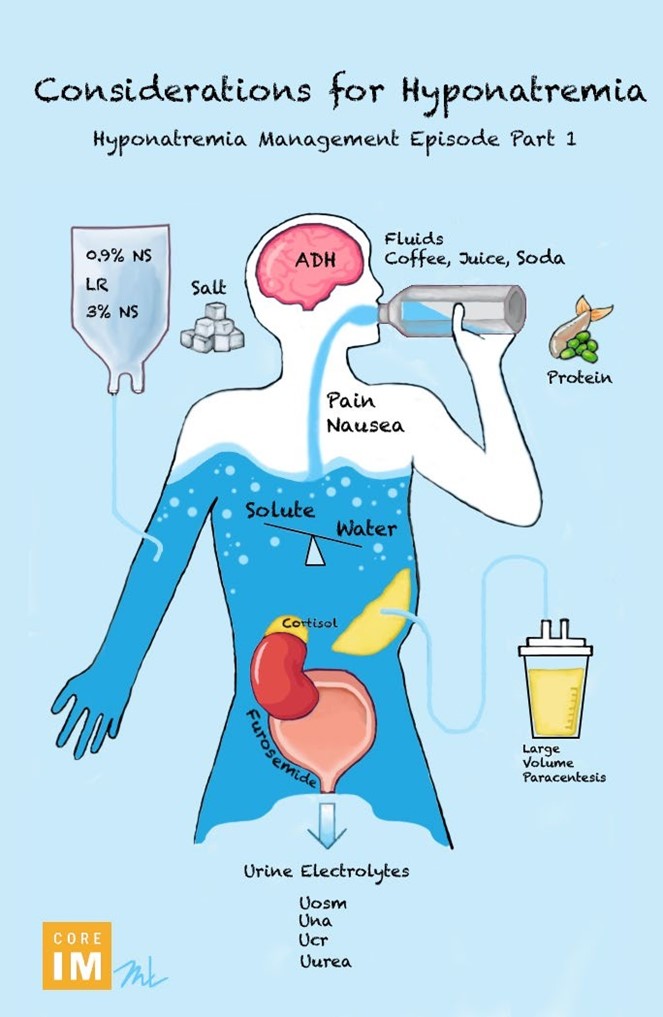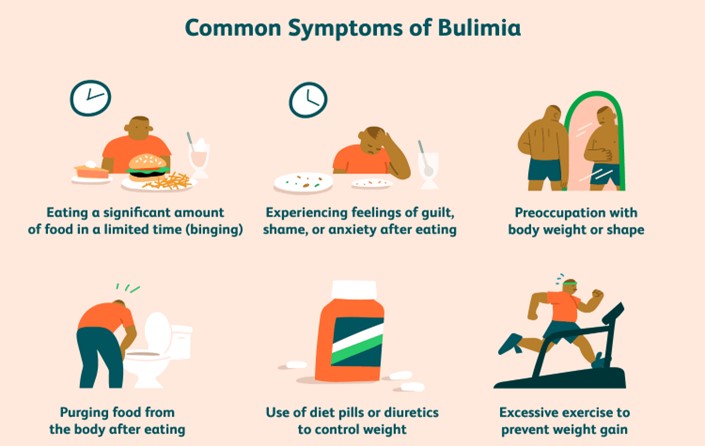A nurse is caring for a patient whose sodium level is 118 mEq/L. Which nursing diagnosis is a priority for this patient?
Comfort, Impaired
Disturbed Sensory Perception
Deficient Fluid Volume
Risk for Injury
The Correct Answer is B
Choice A: Comfort, Impaired is not a priority nursing diagnosis for this patient, because this condition is not directly related to the low sodium level. Comfort, Impaired is a state of physical or psychological discomfort that can affect the patient's well-being and quality of life.
Choice B: Disturbed Sensory Perception is a priority nursing diagnosis for this patient, because this condition is a serious complication of the low sodium level. Disturbed Sensory Perception is a state of altered or impaired perception of reality that can affect the patient's cognitive and neurological functions. Low sodium level can cause cerebral edema, which is a swelling of the brain that can lead to confusion, seizures, coma, and death.
Choice C: Deficient Fluid Volume is not a priority nursing diagnosis for this patient, because this condition is not the cause of the low sodium level. Deficient Fluid Volume is a state of decreased intravascular, interstitial, or intracellular fluid that can affect the patient's fluid and electrolyte balance. Low sodium level can be caused by excess fluid intake, fluid retention, or loss of sodium from the body.
Choice D: Risk for Injury is not a priority nursing diagnosis for this patient, because this condition is not specific to the low sodium level. Risk for Injury is a state of vulnerability to physical or psychological harm that can affect the patient's safety and health. Low sodium level can increase the risk of injury from falls, accidents, or seizures.
Nursing Test Bank
Naxlex Comprehensive Predictor Exams
Related Questions
Correct Answer is B
Explanation
Choice A: Hyperkalemia is not an imbalance that this patient is demonstrating, because this condition occurs when the blood potassium level is too high. This can happen in patients who have renal failure, acidosis, or excessive potassium intake. Hyperkalemia can cause muscle weakness, cardiac arrhythmias, and paralysis.
Choice B: Hyponatremia is an imbalance that this patient is demonstrating, because this condition occurs when the blood sodium level is too low. This can happen in patients who have watery diarrhea, which causes the loss of sodium and water from the body. Hyponatremia can cause abdominal and muscle cramping, nausea, confusion, and seizures.
Choice C: Fluid volume excess is not an imbalance that this patient is demonstrating, because this condition occurs when the body retains more fluid than it excretes. This can happen in patients who have heart failure, kidney failure, or excessive fluid intake. Fluid volume excess can cause edema, distended neck veins, and crackles in the lungs.
Choice D: Hypernatremia is not an imbalance that this patient is demonstrating, because this condition occurs when the blood sodium level is too high. This can happen in patients who have dehydration, diabetes insipidus, or excessive sodium intake. Hypernatremia can cause thirst, dry mucous membranes, agitation, and coma.

Correct Answer is C
Explanation
Choice A: A patient with venous stasis ulcer is not at increased risk for metabolic alkalosis, because this condition does not affect the acid-base balance of the body. Venous stasis ulcer is a chronic wound that occurs due to impaired blood flow in the lower extremities.
Choice B: A patient on dialysis is not at increased risk for metabolic alkalosis, because dialysis helps to remove excess acids and bases from the blood. Dialysis is a treatment that filters and purifies the blood using a machine.
Choice C: A patient with bulimia is at increased risk for metabolic alkalosis, because this condition involves frequent vomiting that causes loss of gastric acid. Gastric acid is a source of hydrogen ions that lowers the pH of the blood. When gastric acid is lost, the blood becomes more alkaline.
Choice D: A patient with COPD is not at increased risk for metabolic alkalosis, but rather for respiratory acidosis. This is because COPD impairs the ability of the lungs to eliminate carbon dioxide, which is a source of carbonic acid that lowers the pH of the blood. When carbon dioxide accumulates, the blood becomes more acidic.

Whether you are a student looking to ace your exams or a practicing nurse seeking to enhance your expertise , our nursing education contents will empower you with the confidence and competence to make a difference in the lives of patients and become a respected leader in the healthcare field.
Visit Naxlex, invest in your future and unlock endless possibilities with our unparalleled nursing education contents today
Report Wrong Answer on the Current Question
Do you disagree with the answer? If yes, what is your expected answer? Explain.
Kindly be descriptive with the issue you are facing.
